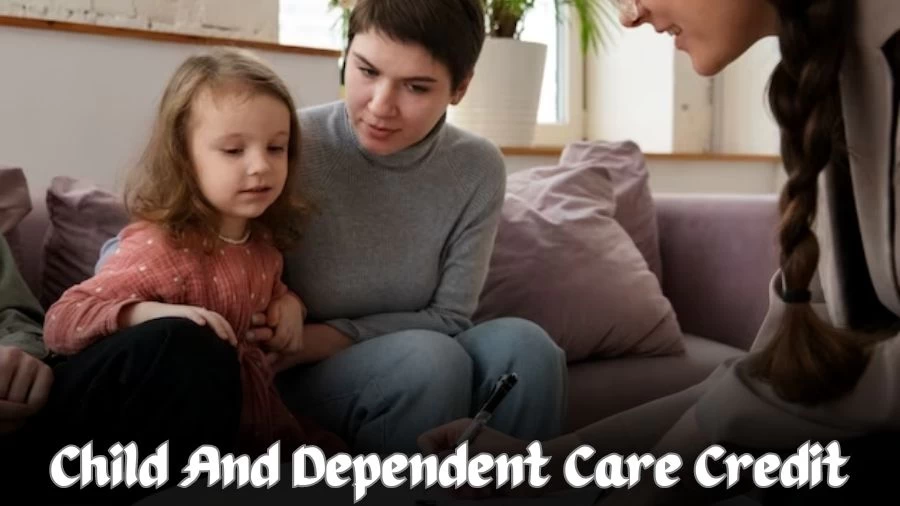
Child and Dependent Care Credit, Is Child and Dependent Care Credit Refundable?
The Child and Dependent Care Credit (CDCC) supports caregivers by reducing qualified care costs through nonrefundable credits, while the child tax credit for 2023 offers up to $2,000 per dependent, both requiring specific forms and criteria for eligibility.
by Sangamithra
Published Aug 28, 2023 | Updated Aug 28, 2023 | 📖 6 min read
Child and Dependent Care Credit
The Child and Dependent Care Credit (CDCC) is a tax benefit aimed at aiding parents and caregivers in covering qualified care costs for dependents like children under 13, incapacitated spouses or parents, and other dependents. To be eligible for this credit on your tax return, you need to have earned income throughout the year and have paid for care expenses, enabling you to either work or actively seek employment.
This credit is particularly advantageous for individuals who expect to have tax liabilities when they file, as it is categorized as a nonrefundable credit. Essentially, the credit amount reduces the owed taxes, yet any excess beyond the tax owed is not refunded to taxpayers.
Child and Dependent Care Credit 2023
In the tax year 2023, the child tax credit encompasses a value of up to $2,000 for each qualifying dependent below the age of 17. The credit's value experiences a reduction if your modified adjusted gross income surpasses $400,000 (for married filing jointly) or $200,000 (for other filing statuses).
While this credit is not refundable, certain taxpayers might be eligible for a partial reimbursement of up to $1,600 via the additional child tax credit upon their 2024 filing. This child tax credit is structured to provide financial relief to taxpayers with eligible dependents, aiming to alleviate the financial load associated with raising children.
It's important to note that the credit's eligibility and refund specifics are contingent upon individual circumstances and income thresholds, encouraging eligible individuals to explore the potential benefits and consider its implications in their tax planning strategies.
How to Calculate Child and Dependent Care Credit?
The Child and Dependent Care Credit is a tax incentive accessible to taxpayers who encounter expenses linked to the supervision of a qualifying child or dependent. This credit holds a potential value of $3,000 for a sole qualifying individual, while it extends to $6,000 for two or more qualifying individuals. For the computation of the credit, taxpayers must initially ascertain their qualified expenditures.
These eligible costs encompass items such as child care, summer camps, and after-school programs. Once these eligible costs are established, the Child Dependent Care Credit Estimator can be employed to determine the extent of the credit applicable to the taxpayer's situation. The Child Dependent Care Credit is a tax benefit that assists households in mitigating the expenses associated with childcare.
This credit is applicable to families with children under 13 years old and has the potential to reach a maximum of $3,000 per child. To perform the credit calculation, it is necessary to have knowledge of the family's earnings, the cost of childcare, and the count of days the child will be under care.
Is Child and Dependent Care Credit Refundable?
Yes, the Child and Dependent Care Credit holds a unique feature for eligible taxpayers - it is refundable. This distinct attribute implies that if the credit surpasses the total sum of federal income tax you are obligated to pay, you retain the right to assert the complete value of your credit. Furthermore, any surplus amount of the credit beyond your tax responsibility can be reimbursed to you.
This signifies that even if your tax liability is exceeded by the credit amount, you won't forfeit the excess; instead, you have the opportunity to receive it back as a refund. This provision offers added financial flexibility and benefits to qualifying taxpayers, ensuring that they can receive the full advantage of the credit, irrespective of their existing tax obligations.
Child and Dependent Care Credit 2022
In the year 2022, the Child and Dependent Care Credit pertains to nonrefundable benefits, allowing you to assert the credit on eligible employment-related costs, which can be up to $3,000 for a single qualifying individual or $6,000 for two or more qualifying individuals.
The credit's pinnacle value stands at 35% of the employment-related expenses incurred. This credit is intended to provide financial relief to individuals who bear the costs of caring for dependents, such as children or incapacitated family members, while they engage in gainful employment or actively seek work.
It's important to note that the credit is nonrefundable, implying that it can reduce your tax liability, but any surplus beyond that liability won't be refunded. This credit aims to alleviate the financial burden associated with dependent care expenses, making it a valuable consideration for eligible taxpayers.
What is the Value of the Child and Dependent Care Credit?
The child and dependent care credit equates to a range of 20% to 35% of a maximum expenditure of $3,000 (pertaining to a single qualifying dependent) or $6,000 (pertaining to two or more qualifying dependents). This translates to the highest attainable child and dependent care credit of $1,050 for a single dependent or $2,100 for multiple dependents during the 2022 tax year.
The extent of the credit you are entitled to receive is contingent upon your adjusted gross income, which establishes the percentage of eligible expenses you can claim as deductions. It is noteworthy that there are no income limitations on the CDCC. If your earnings exceed $43,000, you might still be eligible to assert up to 20% of the incurred expenses.
What are Child Tax Credit Eligibility Requirements?
To qualify for the child tax credit, several "tests" must be met for both you and your qualifying child:
Age: Your child should have been under 17 years old by the end of 2023.
Relationship: The child being claimed must be related to you as a son, daughter, stepchild, foster child, brother, sister, half-brother, half-sister, stepbrother, stepsister, or a descendant of any of these (e.g., grandchild, niece, or nephew).
Dependent Status: You must have the right to claim the child as a dependent. The child can't file a joint tax return, except when claiming a refund of withheld income taxes or estimated payments.
Residency: The child you're claiming should have lived with you for at least half of the year, although certain exceptions apply.
Financial Support: You must have provided over half of the child's support during the previous year. If the child supported themselves financially for more than six months, they might not qualify.
Citizenship: According to the IRS, your child must be a "U.S. citizen, U.S. national, or U.S. resident alien," and possess a valid Social Security number.
Income: Generally, parents or caregivers claiming the credit must not exceed specific income thresholds. The credit gradually diminishes as income surpasses these thresholds, potentially leading to its complete elimination.
What is the Process for Claiming the Child and Dependent Care Credit?
In order to claim the credit, it is necessary to complete Form 2441 and include it together with Form 1040. Ensuring a valid taxpayer identification number (TIN) is provided for each eligible individual is obligatory, with the person's Social Security number generally serving as the TIN. Additionally, the identification of caregivers and institutions responsible for looking after your child, spouse, or dependent is a requisite step.
This includes furnishing their names, addresses, and respective TINs. Maintaining accurate records pertaining to your work-related expenditures is crucial to substantiate your claim for the credit. Moreover, if your dependent or spouse requires assistance due to an incapacity, your records should comprehensively document the nature and duration of the disability.
Child and Dependent Care Credit - FAQ
1. What is the purpose of the Child and Dependent Care Credit?
The Child and Dependent Care Credit assists parents and caregivers in covering qualified care costs for dependents, such as children under 13 or incapacitated family members, enabling work or job-seeking.
2. Is the Child and Dependent Care Credit refundable?
No, the credit is nonrefundable, meaning it can reduce your tax liability but won't be refunded if it exceeds your tax owed.
3. How much is the Child and Dependent Care Credit worth in 2022?
In 2022, the credit can be up to $1,050 for one qualifying dependent or $2,100 for two or more, based on eligible expenses and income.
4. What are the eligibility requirements for the child tax credit?
Eligibility criteria include age (under 17), relationship (various relatives), dependent status, residency, financial support, citizenship, and income limitations.
5. How can I claim the Child and Dependent Care Credit?
Complete Form 2441 and include it with Form 1040, ensuring valid taxpayer identification numbers (TINs) for each dependent. Record work-related expenses and details of dependent care to support your claim.




